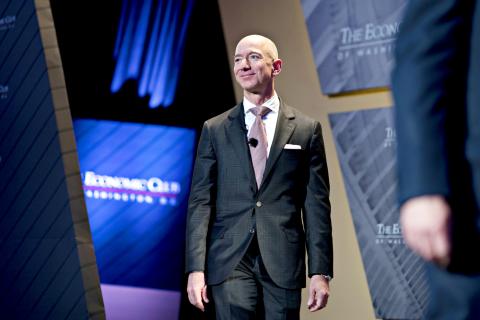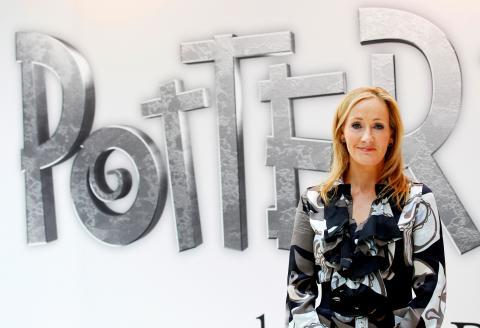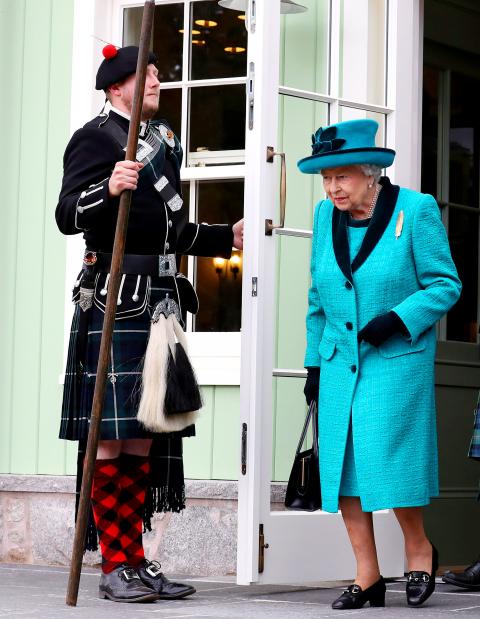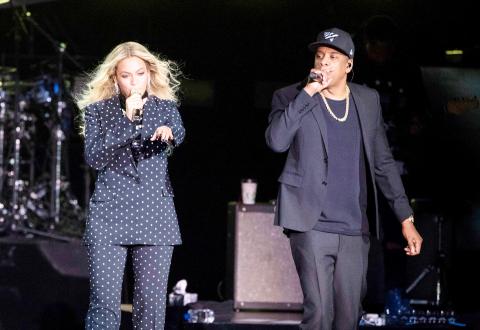Merve Emre was 22 when she found out she was an ENTJ, though she was yet to understand what an impact it would have on her life.
Emre had recently graduated from Harvard University and was working as an associate consultant at Bain & Company, one of the “big three” management consultants. Two weeks in, she and the rest of her intake went to a luxurious off-site facility. Here a career counselor told them to work through an “instrument” — decidedly not a “test” — called the Myers-Briggs Type Indicator. The MBTI is the world’s dominant personality questionnaire: more than 50 million people around the globe are estimated to have taken it. It has been administered since the 1940s (though its origins date to 1917) and now consists of 93 questions to which you answer A or B. At the end, you are assigned one of 16 different types. Many consider this “score” to be meaningless, no more scientifically valid than your star sign. But others — including companies such as Bain, the BBC and many universities — clearly do not.
The indicator found Emre to be more extrovert (E) than introvert (I), inclined to use intuition (N) over sensing (S), thinking (T) more than feeling (F) and prone to judging (J) rather than perceiving (P). Hence ENTJ. The counselor gave those letters some context for Emre and she recalls finding the questionnaire both rewarding and revealing.

Photo: Bloomberg
“I remember being utterly fascinated by it,” she says. “I’d never before encountered what seemed to me then like a relatively rigorous language for thinking about why I was the way that I was. And for feeling really proud about the way that I was.”
TOOL FOR SELF-DISCOVERY
No one type is better than another. The creators of the MBTI — two American women, Katharine Cook Briggs and her daughter, Isabel Briggs Myers — imagined it as primarily a tool for self-discovery. But that doesn’t mean all types are equal. ENTJs, the classification Emre scored, have gained notoriety as the “CEO type.” Donald Trump is said to be one, as is everyone from Hitler to Margaret Thatcher, Bill Gates to George Clooney. The MBTI defines them as: “Frank, decisive, assume leadership readily. Quickly see illogical and inefficient procedures and policies, develop and implement comprehensive systems to solve organizational problems.”

Photo: Reuters
“I was completely seduced by it,” says Emre. “This was in part because I was working at a large, prestigious corporation and I was being told that my personality made me very suitable for becoming a leader in this corporate behemoth.” She laughs. “At 22 there was something attractive about that.”
So, did Emre rise as fast and smoothly at Bain & Company as her Myers-Briggs type might have projected then? “Oh no, I was a terrible consultant,” she replies. “I was really bad at my job! Nine months after I took the indicator, I decided I wanted to go to graduate school and I got a PhD in literature. Yeah, it’s really funny to think that it made me better qualified to do anything. What did I know about business at all? I spent all of college reading novels.”
That was a decade ago. Today, Emre is a 33-year-old associate professor of English at the University of Oxford. She has swapped the corporate world for a cosy, book-lined office just off the main quadrangle of Worcester College. She has given up unlimited bagels and barista coffee for Nicholas Hawksmoor-designed buildings and award-winning gardens that have their own blog. This afternoon, as the sun shines and windfall pears dot the orchard floor, it doesn’t seem like a terrible trade.

Photo: Reuters
After leaving Bain, Emre didn’t reflect much on the MBTI. She did her graduate studies at Yale University, became an assistant professor at McGill University in Montreal, and wrote a book, Paraliterary, about “bad” readers who view fiction and poetry as mere entertainment or distraction. She started to research a second book about the relationship between character and personality in literature and this was when she began to reconsider her own experience with the Myers-Briggs indicator.
“I found out first that it had been designed by two women, which I found fascinating because, like many of my readers, I’d always assumed it was two men,” Emre says.
She made contact with the Myers & Briggs Foundation to see if she could gain access to the archives of Isabel Briggs Myers, the daughter, who had died in 1980. For almost a year, the foundation made her jump through hoops: she had lunch with the vice president in New York; she spent US$2,095 on a week-long certification program that made her qualified to administer the MBTI. But eventually, a librarian told her that the foundation would never allow her access to the papers.

Photo: AFP
Clearly, they underestimated the determination of an ENTJ, and the result is an engrossing new book, What’s Your Type? The Strange History of Myers-Briggs and the Birth of Personality Testing.
“They didn’t realize that I’m the type of person who when denied access will not say ‘Well, I’m just not going to write this book’ but that I’ll figure out how to write this book without that particular source,” says Emre.
Emre says that by the time she pitched the book to publishers, she was “just so ready to write a takedown” of the Myers-Briggs indicator.

Photo: AP
But What’s Your Type? isn’t that.
“The easy thing would have been to tell a story about these two women who wanted to make a quick buck and sold this indicator to a bunch of men who then used this indicator to exploit their workers,” she says. “But that isn’t really the story here.”
THE DEEPER STORY OF MYERS-BRIGGS
The deeper story, Emre found, began with Katharine Cook Briggs who became besotted with the ideas of Carl Jung, the Swiss psychoanalyst.
When her daughter Isabel was born in 1897, she turned their living room into a “cosmic laboratory of baby training,” conducting experiments and drills that would eventually form the basis of a notebook called The Diary of an Obedience-Curiosity Mother. Katharine was responsible for the A-or-B question format, but her main concern was in finding out what conditions best allowed children to develop into “civilized adults.”
Decades later, Isabel realized that an adapted questionnaire could become a “people sorting device,” one that could easily be transposed from children to organizing a workforce.
There is clearly an insidious idea here, or at least the potential for one, as the Myers-Briggs indicator found mainstream acceptance from the 1980s onward. Certainly it can make individuals seem disposable, just cogs in the machine. Still, Emre believes that Katharine and Isabel were fundamentally well meaning.
“I think they truly believed they could figure out a way to make people happy,” she says. “They believed that as mothers that was what they had been trained to learn how to do: to try to keep many different people with conflicting desires and conflicting preferences happy under one roof. And their ultimate endgame was happiness but then also productivity.”
“What’s really interesting about the indicator is that it actually preempts a lot of the more contemporary corporate happiness movements. The moves towards self-care and corporate psychology and the rise of creativity — these women were speaking that language long before it became an ambient reality of our world.”
OF INTROVERTS AND EXTROVERTS
Attitudes towards the Myers-Briggs indicator have varied over the years. In its early incarnation, especially the 1950s and 1960s, it was deemed more desirable to be an introvert.
“There was something very suspicious about the extrovert,” Emre notes. “The extrovert is the people-pleaser, the social man, the superficial one. And the introvert is the serious, creative intellectual who commands respect because he or she will not change herself to meet the demands of others.”
This flipped in the 1970s, Emre thinks, and since then we’ve lived in “the age of the extroverts.”
“Despite the fact that introverts are being summoned by someone like Susan Cain [in her book Quiet], there still is a really strong bias towards extroversion,” she says. “Towards a person who is incredibly flexible with their personality and who can change themselves to meet the demands of any given situation. In some ways it is because that’s what is utterly necessary to succeed in today’s economy, right? You have to be a kind of constantly flexible laborer.”
There are clearly problems, though, with reading too much into a Myers-Briggs score. Peer-reviewed scientific papers on the effectiveness of the indicator are hard to find. It is criticized for giving binary outcomes — you’re either extrovert or introvert — and human personality is often more slippery and changeable. Moreover, one of the central tenets of the instrument is that you can’t change your type: it is innate, fixed from birth. Yet the company that now publishes the MBTI concedes that half of subjects change at least one of their four types when they answer the questions a second time.
For Emre, that the Myers-Briggs indicator lacks scientific rigor almost misses the point. Likewise the fact that it is parodied by online clickbait such as the BuzzFeed quiz, which asks random questions and then tells you which character you are from, say, Game of Thrones or Succession. The Myers-Briggs indicator is entrenched now: the perfect tool for the Century of the Self and beyond.
“I don’t really see it going away,” says Emre. “I mean, it’s really survived attack after attack.”
MBTI, It’s EVERYWHERE
Certainly, when you know about Myers-Briggs, you start to notice those strange clumps of four letters everywhere. They are common on dating profiles and there is a resilient idea that if you share the same type as someone else you are more likely to bond (or, if they are very different, that you’ll be at each other’s throats). On Twitter, someone contacted JK Rowling and suggested that, as fellow INFPs, they should be friends. The author replied that she was actually an INFJ: “conscientious and committed to their firm values,” in the Myers-Briggs argot. But she went on, “That doesn’t mean we can’t be buddies, though.”
As we’re packing up, I mention to Emre that I’ve never taken the MBTI.
“Let’s just do it right now,” she says. She grabs a pen, and for the next 20 minutes we’re discussing introversion versus extroversion, logic or gut instinct, how much I allow my heart to rule my head and vice versa. At times Myers-Briggs can be confusing. For example, I’m not sure why the indicator makes me decide if I’d rather be “competent” or “compassionate” — but it does make you think about your social interactions, how you take decisions and why you are how you are.
When we finish, Emre has four letters scribbled on her hand: ISTJ.
Later, I will look up the Myers-Briggs definition. “Quiet, serious, earn success through thoroughness and dependability,” it reads. “Decide logically what should be done and work toward it steadily, regardless of distractions.”
I wouldn’t vehemently disagree with that assessment, even if I’d like to feel it’s a little reductive. And of course my first instinct is to find out which celebrities this links me to. Emre pulls out her laptop: “Queen Elizabeth II,” she chuckles. “Jeff Bezos, Sigmund Freud, Jean-Claude Van Damme.”
Not ideal, I note, but not Hitler. “George HW Bush, Thomas Hobbes,” Emre continues. “Oh, you have some nasty, brutish people in your corner, too. Anyway, that’s something for you to chew on on your train ride home.”

June 2 to June 8 Taiwan’s woodcutters believe that if they see even one speck of red in their cooked rice, no matter how small, an accident is going to happen. Peng Chin-tian (彭錦田) swears that this has proven to be true at every stop during his decades-long career in the logging industry. Along with mining, timber harvesting was once considered the most dangerous profession in Taiwan. Not only were mishaps common during all stages of processing, it was difficult to transport the injured to get medical treatment. Many died during the arduous journey. Peng recounts some of his accidents in

“Why does Taiwan identity decline?”a group of researchers lead by University of Nevada political scientist Austin Wang (王宏恩) asked in a recent paper. After all, it is not difficult to explain the rise in Taiwanese identity after the early 1990s. But no model predicted its decline during the 2016-2018 period, they say. After testing various alternative explanations, Wang et al argue that the fall-off in Taiwanese identity during that period is related to voter hedging based on the performance of the Democratic Progressive Party (DPP). Since the DPP is perceived as the guardian of Taiwan identity, when it performs well,

The Taiwan People’s Party (TPP) on May 18 held a rally in Taichung to mark the anniversary of President William Lai’s (賴清德) inauguration on May 20. The title of the rally could be loosely translated to “May 18 recall fraudulent goods” (518退貨ㄌㄨㄚˋ!). Unlike in English, where the terms are the same, “recall” (退貨) in this context refers to product recalls due to damaged, defective or fraudulent merchandise, not the political recalls (罷免) currently dominating the headlines. I attended the rally to determine if the impression was correct that the TPP under party Chairman Huang Kuo-Chang (黃國昌) had little of a

A short walk beneath the dense Amazon canopy, the forest abruptly opens up. Fallen logs are rotting, the trees grow sparser and the temperature rises in places sunlight hits the ground. This is what 24 years of severe drought looks like in the world’s largest rainforest. But this patch of degraded forest, about the size of a soccer field, is a scientific experiment. Launched in 2000 by Brazilian and British scientists, Esecaflor — short for “Forest Drought Study Project” in Portuguese — set out to simulate a future in which the changing climate could deplete the Amazon of rainfall. It is